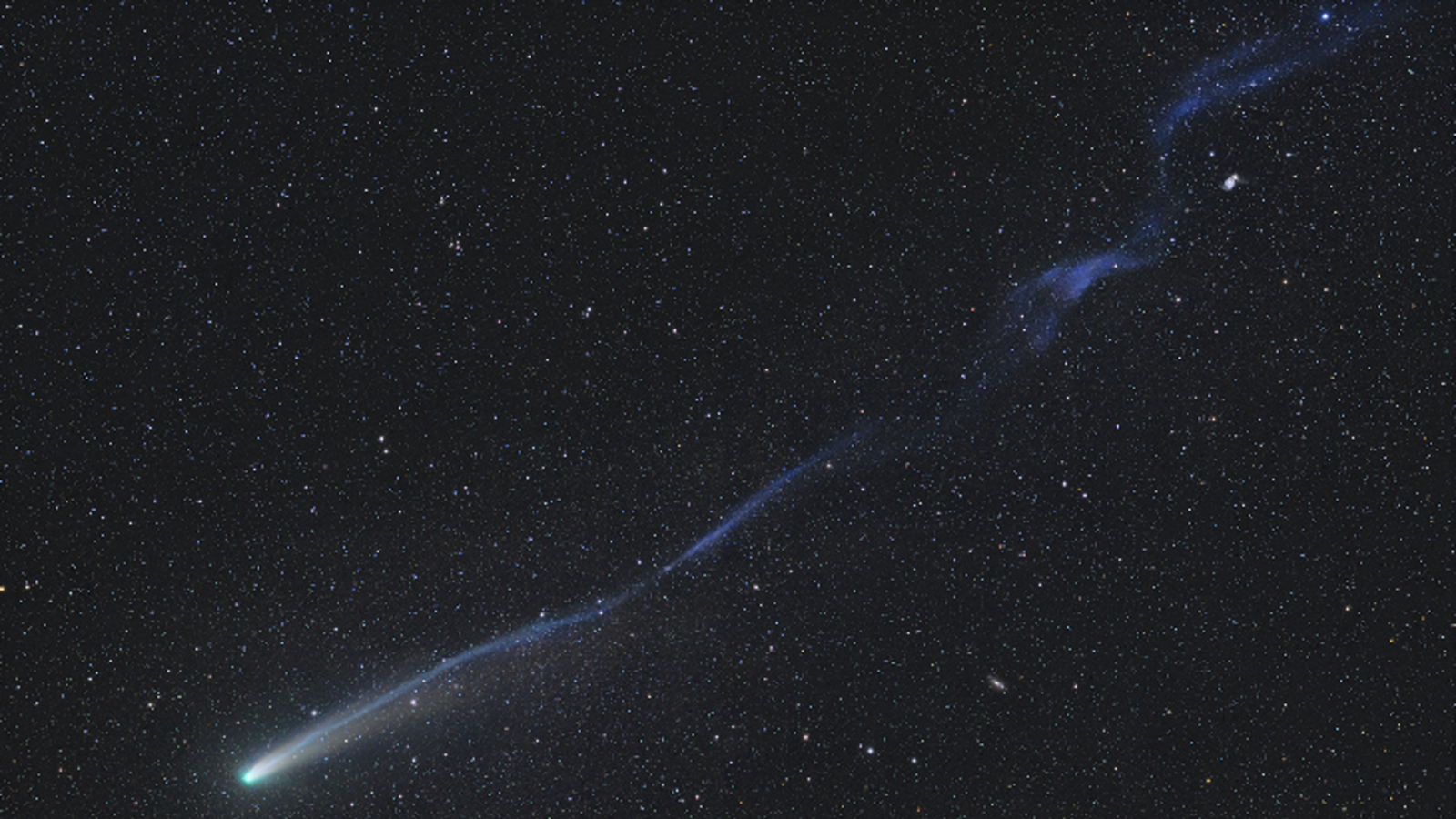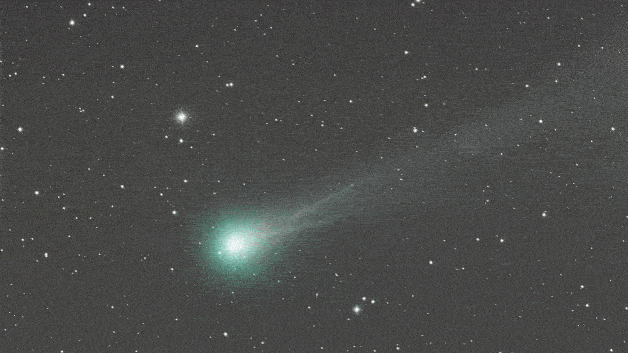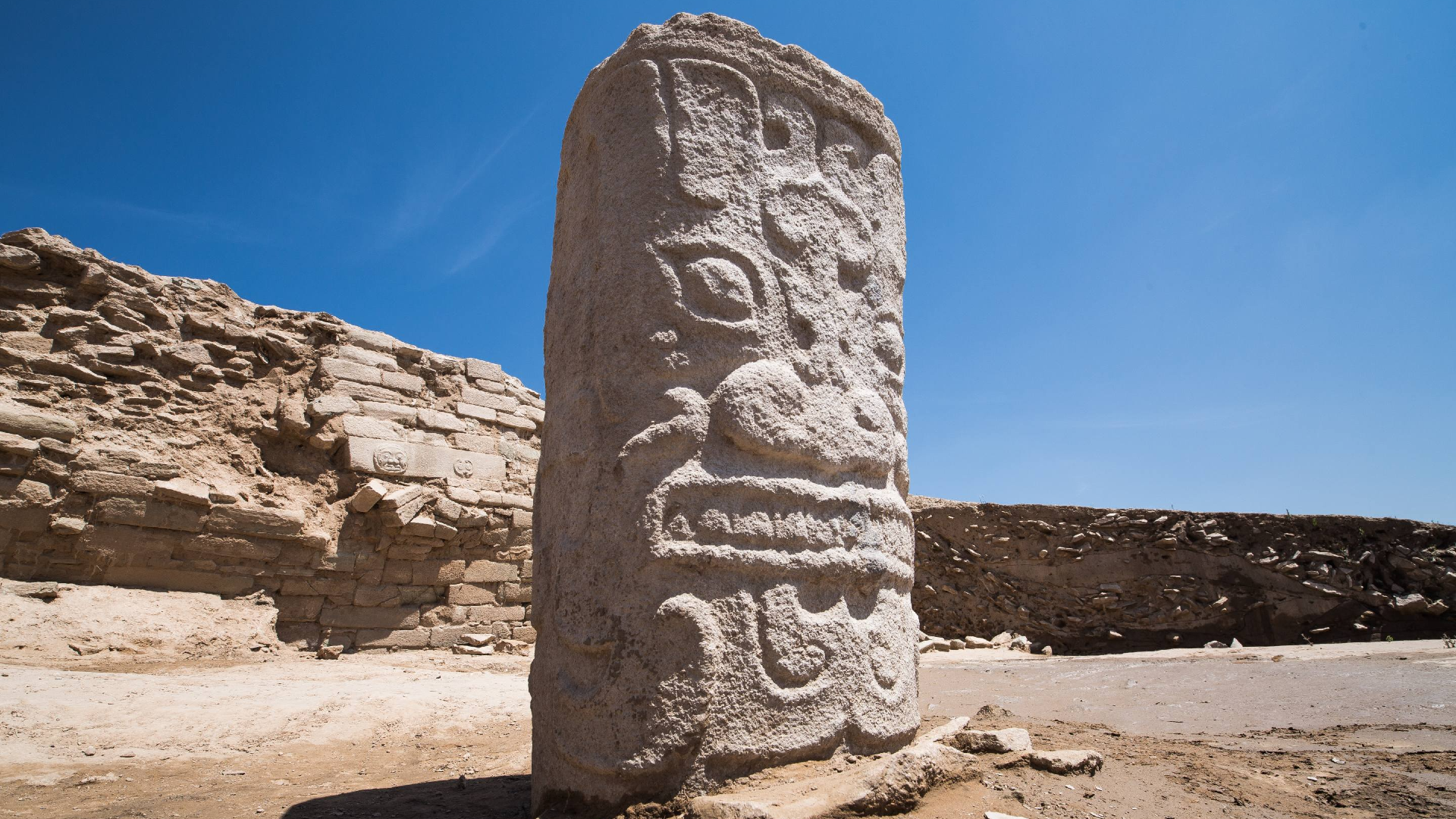Superbright 'Comet Lemmon' gets its tail temporarily torn to pieces by solar wind
An astrophotographer snapped a stunning shot of Comet Lemmon's flowing tail getting shredded by a strong gust of solar wind, just three days before it reaches its closest point to Earth.

A striking new photo of the superbright "Comet Lemmon" (C/2025 A6) shows the partial remains of its sizeable tail, shortly after the ethereal limb was temporarily torn apart by the sun. The cosmic shredding occurred just a few days before the comet is due to make its closest approach to Earth on Tuesday (Oct. 21).
Astrophotographer Petr Horálek captured the stunning shot from Lake Seč in Czechia (also known as the Czech Republic) in the late hours of Saturday (Oct. 18), according to Spaceweather.com. The original wide-field photo (see below) also features faint red-pink auroras that hung low in the night sky.
The auroras, or Northern Lights, were the result of a surprise G2 (moderate) class geomagnetic storm that began early the same day. This temporary disruption to Earth's magnetic field was triggered when a coronal mass ejection (CME) from the sun slammed into our planet, around two days later than originally expected. Comet Lemmon was also photographed alongside a much more vibrant aurora display over Scotland, which contained a much more diverse set of colors.
However, the CME did not shred the comet's tail. Instead, the damage was likely caused by a strong gust of solar wind, which twisted and — at several points — completely disrupted the trail of gas and dust. This type of rippling along the tail is not uncommon among major comets, especially as they approach the sun. But the total separation of parts of the flowing limb, known as disconnection events, are much rarer.
This is not the first time that Lemmon's tail has been battered by the sun. The tail was also wobbled by a strong solar gust in late September and experienced a minor disconnection event on Oct. 4, according to Live Science's sister site Space.com. In each case, the comet's tail likely returned to normal within a few hours of being disrupted.

Comet Lemmon was discovered earlier this year, on Jan. 3, by researchers at the Mt. Lemmon SkyCenter observatory in Arizona's Santa Catalina Mountains. It is a nonperiodic comet that has likely orbited the sun every 1,350 years.
Lemmon will make its closest approach to Earth today (Tuesday, Oct. 21), when it will come within 56 million miles (90 million kilometers) of our planet, before reaching its closest point to the sun, or perihelion, on Nov. 8.
Get the world’s most fascinating discoveries delivered straight to your inbox.

The comet has become much brighter in recent weeks as its increased proximity to the sun has caused the cloud of gas, ice and dust surrounding it — known as its coma — to expand. It currently has an apparent magnitude of 4, making it clearly visible to the naked eye.
People in the Northern Hemisphere can see the comet in the northwestern sky, located just below the Big Dipper, shortly after sunset. While visible to the naked eye, the best views will be achieved with a decent backyard telescope or a pair of stargazing binoculars. To capture the best possible photos of Lemmon, you can check out our comet photography guide.
Another bright comet, dubbed SWAN, also reached its closest point to Earth on Monday (Oct. 20) and is currently observable in the night sky not far from Lemmon. However, SWAN is not visible to the naked eye and can only be seen using stargazing equipment.

Harry is a U.K.-based senior staff writer at Live Science. He studied marine biology at the University of Exeter before training to become a journalist. He covers a wide range of topics including space exploration, planetary science, space weather, climate change, animal behavior and paleontology. His recent work on the solar maximum won "best space submission" at the 2024 Aerospace Media Awards and was shortlisted in the "top scoop" category at the NCTJ Awards for Excellence in 2023. He also writes Live Science's weekly Earth from space series.
You must confirm your public display name before commenting
Please logout and then login again, you will then be prompted to enter your display name.


